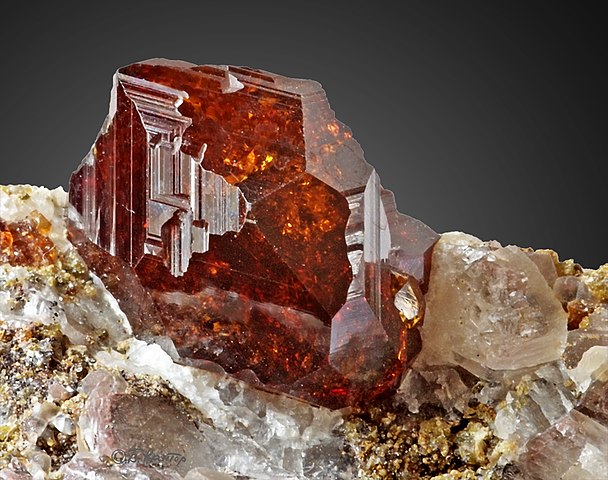Difference between revisions of "Template:Occult.live:Today's featured article"
Occultwiki (talk | contribs) |
Occultwiki (talk | contribs) |
||
| (109 intermediate revisions by the same user not shown) | |||
| Line 1: | Line 1: | ||
[[File: | [[File:Garnet Crystal.jpg|200px|left]] | ||
'''[[ | A '''[[crystal]]''' or crystalline solid is a solid material whose constituents (such as atoms, molecules, or ions) are arranged in a highly ordered microscopic structure, forming a crystal lattice that extends in all directions. In addition, macroscopic single crystals are usually identifiable by their geometrical shape, consisting of flat faces with specific, characteristic orientations. The scientific study of crystals and crystal formation is known as crystallography. The process of crystal formation via mechanisms of crystal growth is called crystallization or solidification. | ||
Crystals, or crystalline solids, are often used in crystal healing therapy, and, along with gemstones, are sometimes associated with spellwork in [[Wicca]]n beliefs and related [[occult]] practices. The Sumerians utilized crystals in their [[ritual magic|magical]] formulas as long as 6000 years ago. Examples of large crystals include snowflakes, [[diamond]]s, and table salt. | |||
'''([[ | '''([[Crystal|Full Article...]])''' | ||
Latest revision as of 05:16, 19 June 2025
A crystal or crystalline solid is a solid material whose constituents (such as atoms, molecules, or ions) are arranged in a highly ordered microscopic structure, forming a crystal lattice that extends in all directions. In addition, macroscopic single crystals are usually identifiable by their geometrical shape, consisting of flat faces with specific, characteristic orientations. The scientific study of crystals and crystal formation is known as crystallography. The process of crystal formation via mechanisms of crystal growth is called crystallization or solidification.
Crystals, or crystalline solids, are often used in crystal healing therapy, and, along with gemstones, are sometimes associated with spellwork in Wiccan beliefs and related occult practices. The Sumerians utilized crystals in their magical formulas as long as 6000 years ago. Examples of large crystals include snowflakes, diamonds, and table salt.
